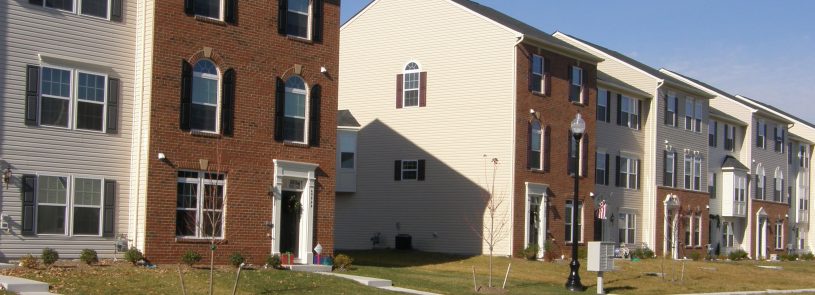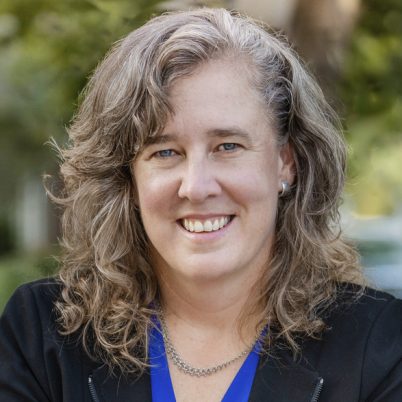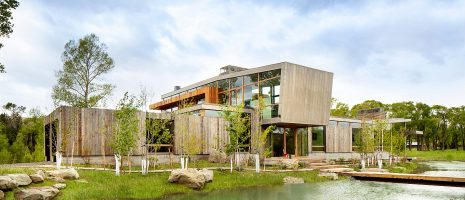Q&A with ‘housing champion’ Sylke Knuppel

IMEG’s Sylke Knuppel, PE, MRED, is a self-proclaimed housing champion, dedicating her career to working with land entitlements and development. In this Q&A, Sylke, a Project Executive based in Lanham, Maryland, talks about what sparked her interest in this area, and the need for more housing.
Q: There’s a lot of talk about the need for affordable housing. Can you define that? How is it the same/different from terms like “workforce housing” or “attainable housing?”
A: They mean different things and I don’t think everyone understands the differences. Market-rate housing uses the words “workforce,“ “attainable,” or luxury. It’s typically built by private developers and builders that are for-profit. “Affordable housing” typically is built by firms that are non-profit, is subsidized through local, state, and federal programs, and therefore their financial business model is completely different than for-profit developers. They earn a developer’s fee from local, state, or federal agencies and are not driven by profit. Their mission is providing affordable housing, but they make their money in a different way from the private industry.
Q: Why has housing become so unaffordable?
A: Housing at almost all levels has been under-produced and that created an affordability issue for all. We need more housing for everyone—affordable housing, workforce housing, and higher-end housing. The opportunity for homeownership and generational wealth is critical so people can move from renting to owning as they advance in their career/life.
One of the biggest barriers to building more housing is the cost of land and the cost of regulation, which includes land acquisition, permit fees, impact fees, etc. This can amount to 30 percent to 50 percent of the cost of a new home and people don’t always understand that these costs will flow through to the customer/ buyer.
Q: What are the most promising strategies?
A: Local municipalities and counties need to understand that you need jobs to grow an economy; and to get jobs, you need housing. They go together. One of the strategies in Maryland is to identify housing production targets in different areas of the state. By understanding how much housing is being built, and creating local housing targets, it helps reach the regional housing needs. This will help the municipalities and counties that think they don’t need any more housing to understand that to have growth and new jobs, you must have housing to go with it.
Q: How could city, county, state, and federal governments encourage more housing?
A: Some municipalities and states are working on zoning changes that would eliminate or change the zoning ordinances to allow for things like multi-family buildings or “missing middle” housing (i.e., duplexes or triplexes) in what is now single-family zones that prohibit other housing types.
Zoning change is a goal, but it will take time and education of stakeholders. For example, in Montgomery County, Maryland, 35% of the county is zoned for single-family homes, no small multi-family, duplexes or multiplexes allowed. Reformers want to allow these slightly denser products to be built around the transit hubs and major roadways to encourage increased density where it makes sense and to encourage transit use.
In California, a recent bill was introduced to add density along roadway corridors, where there are mainly retail strip centers. It is less objectionable to build higher density residential along roadways and as you step away from those roads, you transition to more single-family homes. Creative ideas such as this will help entice housing.
Another option would be incentivizing localities, sort of like the opportunity zones that were developed, or new market tax credits. If incentives were available for all housing, and there were some changes to zoning, I think that could spur more development.
Q: What role does NIMBYism play?
A: NIMBY—the “not in my backyard” attitude—is an obstacle. Developers like certainty. They want to know what their costs are, and how long approvals will take, since investors need that information before they will fund a project. When people can define themselves as stakeholders and weigh in on a process after it is initially zoned and can continue to weigh in after its approved by filing lawsuits, it slows the process down and increases the costs.
I think we as professionals, in the private sector, can help educate the public as to why housing is so important to the local economy, and help people understand that whether they live in a house or multifamily, there is someone who had a vision, took a risk, and decided to develop that project. Doing that work takes vision, and risk, and money. That kind of education could offset NIMBYism, and flip attitudes to YIMBYism, the “yes in my backyard” movement.
Q: How did you get interested in housing as the focus of your engineering career?
A: When I was a teenager, I had a summer job as a carpenter, working for a friend of the family. We built houses in Maryland, and I did that every summer until I went to college at Johns Hopkins, where I earned a civil engineering degree. I always knew that I liked building and designing things. My first job out of college was with a national builder, as part of their internal residential design team. We prepared the architectural drawings, the wall panel designs for our manufacturing plant, and structural frame packages we received from outside vendors for all the single-family home products. I moved into their land development department and have been in a similar role since I joined IMEG—designing communities and entitling land in the D.C., Maryland, and Virginia region. I love what we do and the customers we support.












